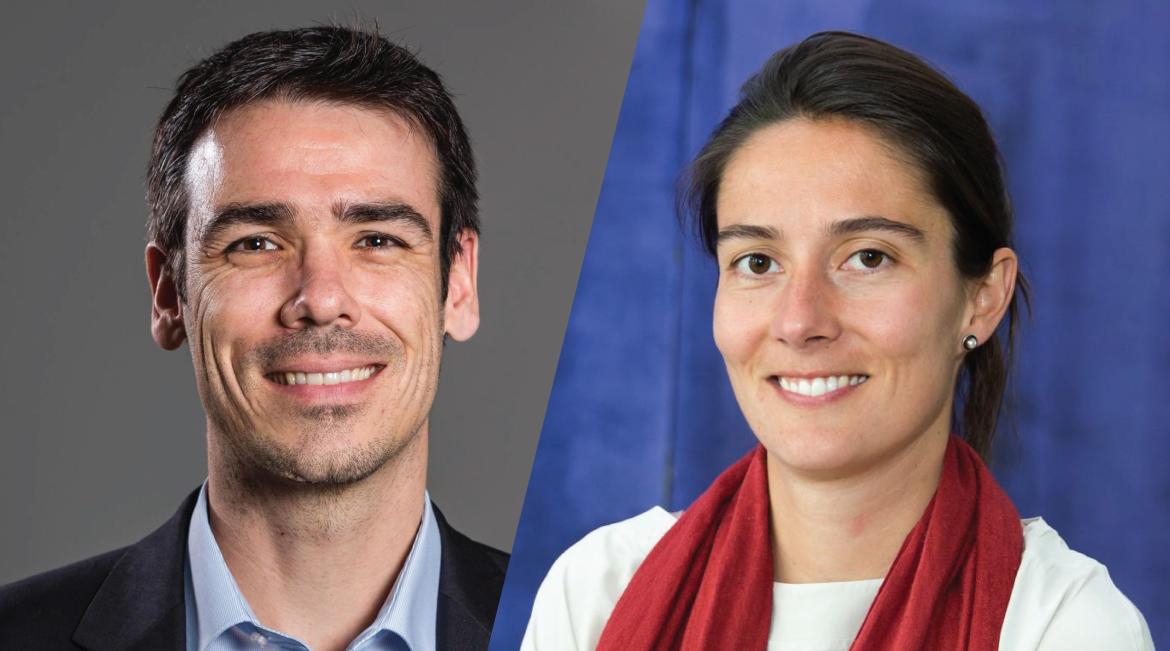Swiss Re on Public-Private Partnerships and the Future of Disaster Risk Finance

Spotlight on Public-Private Collaboration: Swiss Re on Advancing Disaster Risk Finance at the DRF Academy – Executive Education Program
As countries continue to face rising climate and disaster risks, the role of public-private partnerships in shaping effective financial resilience strategies has never been more critical. During the recent Disaster Risk Finance (DRF) Academy – Executive Education program, participants from around the world gathered to explore actionable approaches for scaling up disaster and climate risk finance, with a strong focus on collaboration, sustainability, and tailored solutions.
We had the pleasure of hearing from Fedra de Angelis Effrem, Client Manager Public Sector Solutions, and Andreas Weigel, Senior Underwriter Agriculture, who shared their perspectives as representatives of the international reinsurance sector. Their reflections underscore the importance of engaging the private sector early in the design of national disaster risk financing schemes and highlight the value of peer learning and innovation across contexts.
What was your overall impression of the knowledge sessions at the Disaster Risk Finance Academy – Executive Education program?
We were impressed by the open discussions and the collaborative atmosphere at the Disaster Risk Finance Academy – Executive Education program. The exchange of ideas between participants from different countries was extremely valuable. While disaster risk finance (DRF) solutions are not one-size-fits-all, it was evident that national schemes share common elements.
For instance, one crucial topic discussed was the type of exposures that need to be covered. Traditionally, most schemes focus on households, but we are now seeing new efforts, such as the NatCat schemes under development in Italy and Greece, that target businesses. They all have in common the goal to reduce the contingent liabilities on the State's budget.
Another key element of successful schemes is sustainability. For a scheme to be sustainable, it must be affordable for the population it covers, and long-term financing should be addressed. We explored various tools, from governmental guarantees to levies and mandatory covers that foster diversification, which can ensure sustainability.
The sessions related to agricultural disaster risk were highly insightful and important as well, considering the high social and economic importance of the agricultural sector to most participating countries. Many interesting examples and showcases were presented that demonstrated how public private partnerships between the re-/insurance industry and governmental or international institutions can foster financial and social resilience, and, ultimately, contribute to food security and economic development.
Overall, the academy fostered the exchange of ideas and best practices, demonstrating that it is possible to develop new Disaster Risk Finance (DRF) schemes tailored to local realities.
As an international reinsurer, can you summarize the key takeaways from your interactions with other private sector participants and country delegations?
We were very grateful to the World Bank for involving private sector participants through the Insurance Development Forum (IDF) in this program. It is crucial to embed the private sector in the design of new schemes. Through a well-calibrated set-up, the private sector can absorb part of the risk otherwise borne by the public, thus increasing both the financial sustainability and affordability of the scheme. For example, we learned about the concept of risk layering adopted in New Zealand.
Another important point is that the private sector should be involved early in the process, which can be facilitated through tripartite agreements under the IDF. During the event, we heard about several successful examples of public-private partnerships from several IDF members. A particularly interesting IDF project example comes from the World Food Programme (WFP) for Syria for the World, where we collaborated with Hiscox and Howden to launch an innovative parametric cover for WFP’s contingency plans against food insecurity due to drought conditions. Another noteworthy and in fact "brand new" example, launched only one week before the Academy, was presented by the Uzbek delegation, namely an insurance scheme for climate-vulnerable horticulture farmers, subsidized by the Government of Uzbekistan, and arranged under the tripartite agreement of IDF/UNDP/BMZ, where we collaborated with Europa Re, local insurers, UNDP, the InsuResilience Solutions Fund (ISF) and the Government of Uzbekistan to advance the climate resilience for smallholder farmers. These and other examples presented by various delegations highlighted the importance of governmental involvement and support, e.g. through premium subsidies, for the establishment of successful and scalable agricultural insurance schemes.
Regarding the country delegations, we sensed a lot of positive energy and a genuine willingness to invest in DRF, which is becoming a priority for many governments. While the needs and current arrangements of countries vary widely, with some like Türkiye and Morocco having well-established Natural Catastrophe and Agricultural insurance schemes and others just starting, the main takeaway is that there are numerous opportunities to improve the status quo.
By learning from each other and leveraging the strengths of different stakeholders, we are confident we can make the world more resilient together.
A warm thank you to Fedra de Angelis Effrem and Andreas Weigel from Swiss Re for their thoughtful contributions. Their insights not only highlight the importance of public-private collaboration but also demonstrate Swiss Re’s continued commitment to advancing disaster risk finance and building global resilience.
